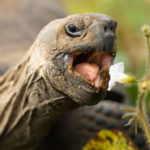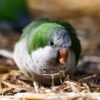- How Long Does A Quaker Parrot Live? - 17 May 2024
- 4 Hacks on Keeping Your Home Clean With Pets - 28 March 2024
- 5 Things to Know Before Bringing Home a New Kitten - 26 March 2024
The Banana Spider Florida, scientifically known as Nephila clavipes, is a fascinating and important part of Florida’s ecosystem. Its silk inspires scientific research and its behavior helps control pest populations. Female banana spiders can increase up to 2 inches in body length – including their legs and are a dazzling yellow color. They prey on a variety of insects and can bite, but they rarely do.
Table of Contents
Banana Spider Florida Lifespan

Banana spiders are also known as golden orb-weavers. They are found in a wide variety of habitats across Florida, from tropical forests and mangroves to agricultural fields and urban gardens. They are most commonly spotted in the southern and central regions of the state. Like many other arachnid species, banana spiders prefer warmer climates and are very successful in areas where they are protected from natural predators and have greater access to prey.
Banana Spider Physical Characteristics
Banana Spider Florida, also referred to as Golden Silk Orb-weavers, are renowned for its striking appearance and intricate webs. Here’s what you need to know about these remarkable arachnids:
| Characteristics | Description |
| Scientific Name | Phoneutria |
| Common Name | Banana Spider or Brazilian Wandering Spider |
| Size | Typically 1.5 to 5 inches (3.8 to 12.7 centimeters) |
| Body Color | Generally brown or black with distinctive markings |
| Leg Span | Can have a leg span of up to 6 inches (15.2 centimeters) |
| Abdomen | Large and bulbous, with a shiny appearance |
| Fangs | Prominent, large, and powerful fangs |
| Behavior | Highly aggressive and defensive when threatened |
Who are opportunistic hunters?
Banana Spider Florida are opportunistic hunters that feed on both flying and ground insects. They create large webs to capture flies and other small flying insects, but they also spend time scavenging dead insects or catching food while moving through the environment. Despite their impressive size and vibrant coloration, these spiders are not violent and will only bite if threatened. Even then, a bite from this type of spider is usually no more painful than a bee sting or mosquito bite.
Human-Induced Threats to Banana Spider Populations
Although this species of spider is considered a nuisance in some areas, it is a vital part of the ecosystem and should be left alone to carry out its necessary environmental functions. Unfortunately, human activity in the form of urbanization and habitat destruction has negatively impacted these creatures. Thankfully, conservation initiatives exist to help protect their populations and educate communities on the importance of this fascinating arachnid.
Life Stages of Banana Spider Florida
During the course of their lives, banana spiders go through several stages. They start out as eggs, grow into curious spiderlings, and then, after a few molts, become mature adults. During this time, they will experience the joys and challenges of each stage. The lifespan of a banana spider Florida is typically no longer than a year.

This may not seem like a long time for a human, but for a spider, it is plenty of time to experience life as an egg, a curious spiderling, and, finally, a mature adult. Once female banana spiders lay their first egg sac, they will guard it carefully against any potential threats. Once their eggs hatch, the newly born spiderlings will live for a few weeks before maturing and setting out on their own.
When to Observe Banana Spiders in Florida
The most prevalent banana spider found in Florida is the female golden silk orb weaver. These impressive spiders are truly enormous. These spiders are a beneficial species, catching mosquitoes, beetles, and other insects that might otherwise harm the environment. Bites from banana spider Florida are generally not dangerous to healthy adults but can be harmful to infants and those with allergies or health issues.
1. Fall Season
During the fall season, Florida banana spiders are most abundant. These yellow spiders, also known as Golden Silk Orb Weavers, are a common sight in natural and developed areas. Like all spiders, banana spiders can bite humans, but the majority of bites are mild and not dangerous. This spider’s venom is only strong enough to cause local pain, swelling, and numbness.
2. Winter
While banana spiders do not typically build webs in the winter, they can still be seen occupying out-of-the-way nooks and crannies around Brevard County. In fact, these spiders are quite common along local hiking trails and in some of the county’s more well-traveled natural areas. During the colder months, they will often be found resting with their abdomens stretched out over their bodies, or they may simply be curled up in a leaf.
3. Spring Season
During spring, the banana spider’s golden silk is brighter and easier to see against vegetation. Females create large webs in forest areas, often along walking trails, to trap prey such as flying insects. These webs can measure up to 6 feet in diameter, and the spiders adjust their yellow hue to match the lighting conditions of the area. These giant webs are a notorious nuisance for hikers, who may have to walk around or through them.
4. Summer Season
In Brevard County, banana spiders can be seen all year, but they are particularly abundant in the summer. They are often a common sight in out-of-the-way places such as public parks and conservation areas. Joanne Howes, an education specialist with the Anne Kolb Nature Center in Hollywood, says that banana spiders are a common sight this summer because it is their breed season.
Egg Protection Strategies of Banana Spiders
A banana spider’s eggs are protected by a silk sac that surrounds the center of the web. A female may lay up to 1,000 eggs during her lifetime, depending on the species and environment. Eggs hatch into spiderlings after about nine months to a year. They are then ready to mate, which occurs in the fall.
After mating, male and female spiders separate. Females often create new egg sacs in a different location than their original web to protect their young. The sacs are yellow and resemble tiny pumpkins. Females also erect a smaller, protective egg shield that encircles their web and protects the eggs.
Final Thoughts
Banana Spiders in Florida are more than just fascinating arachnids; they are essential components of the state’s rich ecosystem. While their appearance may startle some, it’s crucial to appreciate their role in maintaining the delicate balance of nature.
















